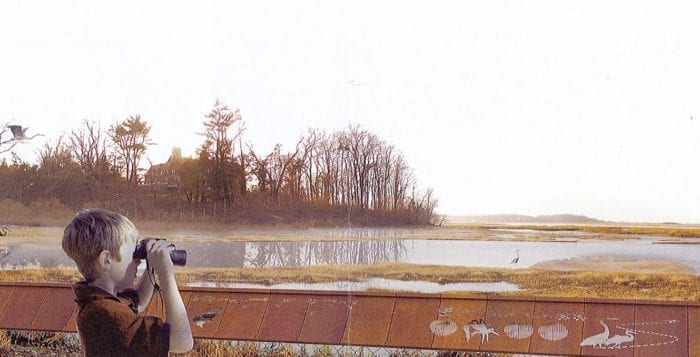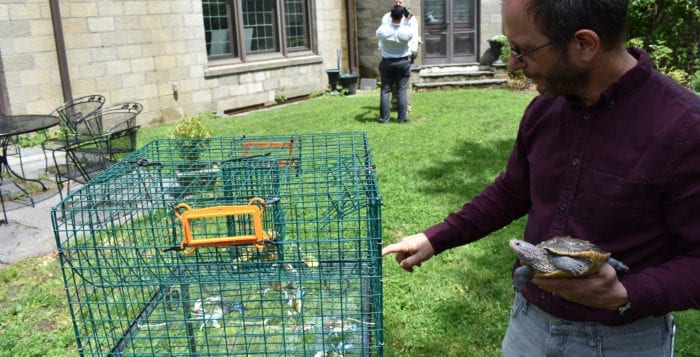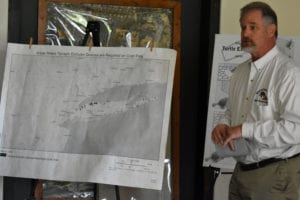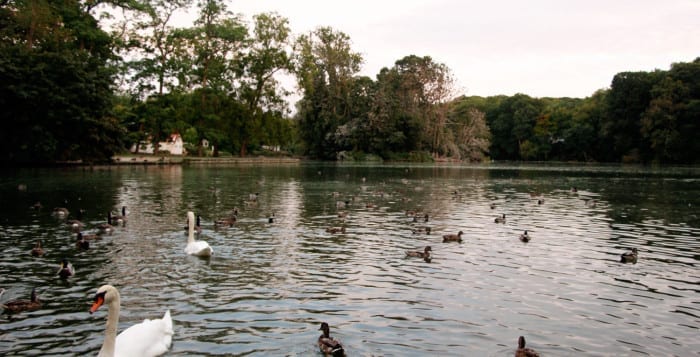SUMMER TIDE
Elyse Buchman snapped this peaceful scene in her hometown of Stony Brook on June 14 while having a sunset dinner with her husband at the Hercules Pavilion.
Send your photo of the week to [email protected]
SUMMER TIDE
Elyse Buchman snapped this peaceful scene in her hometown of Stony Brook on June 14 while having a sunset dinner with her husband at the Hercules Pavilion.
Send your photo of the week to [email protected]
A TIME TO BE THANKFUL
Tom Caruso of Smithtown captured this spectacular sunset at Stony Brook Harbor on Oct. 13. He writes, ‘My wife and I were returning from the Shoppes at East Wind when I saw the sky turning beautiful colors as I turned toward the harbor. I was stunned by the sight and got my camera out of my bag and started snapping away. I was among at least eight people photographing it in the parking lot across from the Three Village Inn.’
DONNING DANCING SHOES
F..J. Buncke of the Stony Brook Camera Club caught this snowy egret ‘doing the golden slipper dance’ in Stony Brook Harbor on Sept. 20. The handsome white wading bird sports black legs with yellow feet making it appear as if he is wearing shoes. All he needs now is a dancing partner.
Send your Photo of the Week to [email protected]
UNITY OF SKY, LAND AND SEA
Huberto Pimentel of East Setauket took this photo of Stony Brook Harbor at the end of April. He writes, ‘Life flows even in low tides.’
Send your Photo of the Week to [email protected]
HARBOR MORNING
Jay Gao captured this serene image at Stony Brook Harbor on the morning of April 14 with his Nikon D750 camera. He writes, ‘It was a foggy morning, and many waterfowl flew in and out of the harbor.’
Send your Photo of the Week to leisure@tbrnewspapers.com

By Donna Deedy
Avalon Park & Preserve is expanding its recreational trails to extend from its existing location on Harbor Road over to a 28-acre farm along Stony Brook Harbor. When completed, the public will have access to a boardwalk that overlooks a marine sanctuary on the Long Island Sound.
The new site, which is currently private and not yet open to the public, is located directly east of Harmony Vineyards in Head of the Harbor.
The Smithtown Town Board voted March 5 to approve the project, known as Shore Farm. Additional state and town approvals are needed before Head of the Harbor can issue its permit. No time frame has been reported for the project’s completion.
The park currently encompasses 76-acres and is comprised of five distinct natural habitats populated entirely with native fauna. People are excited about the expansion.
“Avalon is an excellent steward of their lands,” said Joyann Cirigliano, president of the Four Harbors Audubon Society. The area, she said, is officially designated Important Bird Area for migratory birds. “The park provides a full range of bird habitats: field, forest, edge, shore and fresh ponds.”
Cirigliano said that the park is particularly good at keeping out invasive species, which allows scrub brush to thrive. The scrub, she said, is an important habitat for the warbler and other edge birds, a population in decline.
Avalon Park & Preserve was created in 1997 by the Paul Simons Foundation to celebrate the life of Paul Simons. Paul is the son of Renaissance Technology founder James Simons. He and his wife Marilyn and family planned the park to honor Paul’s love of nature after his life was prematurely interrupted at age 34, when he was killed by a car in a biking accident near his home in the Three Village area. When complete Avalon Park & Preserve will encompass roughly 104 acres.
The park, though it is privately owned, is open to the public from dawn to dusk 365 days a year. In addition to its trails, the park offers yoga classes and stargazing programs at an on-site observatory, when conditions permit. The Audubon society hosts bird walks in the park. Information can be found on Avalon’s website.
“We have been involved with Avalon Park from the beginning and are most excited about the expansion and the joy and happiness it brings to so many people,” said Gloria Rocchio, president of The Ward Melville Heritage Organization in nearby Stony Brook.

It has been a slow crawl saving Long Island’s turtles, but local conservation groups are hoping new state regulations will speed up the process.
The New York State Department of Environmental Conservation and Long Island environmental groups gathered May 23 at the Suffolk County Environmental Center in Islip to celebrate new rules requiring crab cages — used in Long Island’s coastal waters including many of the bays, harbors and rivers that enter Long Island Sound — to have “terrapin excluder devices” (TEDs) on all entrances. As carnivores, terrapins are attracted to bait fish used in commercial, or what’s known as Maryland style crab traps or “pots.” As a result, male and female turtles of all sizes push their way through the entrance funnels and end up drowning.

“With each and every season these traps are not required to have TEDs, there are likely hundreds of terrapins that are drowning,” said John Turner, conservation policy advocate for Seatuck Environmental Association, which operates the Islip center. “To me, one of the signs of a real civilized society is how we treat other life-forms. We haven’t treated terrapins very well.”
He said in Stony Brook Harbor alone there are dozens, maybe hundreds of terrapins that will spend the winter in the mud, emerging once the water runs up high enough. Turner said many of the North Shore areas that are home to these turtles, like Setauket Harbor, Conscience Bay, Port Jefferson Harbor, Mount Sinai Harbor and Nissequogue River, play a key role in preserving the species.
“In contrast to where I am in South Jersey, I can go by the canals and I can see a dozen [terrapin] heads bobbing up and down,” said James Gilmore, director of the marine resources division at the state DEC. “Here, it’s very rare to see one. Hopefully these new rules will help us see more.”
Gilmore said the DEC began working on changing state regulations in 2013 but have known long before there was a problem.
Carl LoBue, The Nature Conservancy’s New York ocean program director, said it was in the late 1990s he’d witnessed recreational crab traps in Stony Brook Harbor. One day he lifted a cage out of the water while trying to move his landlord’s boat and saw it was filled with trapped terrapins. Two were still alive, but five
had already drowned.
“With each and every season these traps are not required to have TEDs, there are likely hundreds of terrapins that are drowning.”
— John Turner
“I’m sure the crabber wasn’t intent to kill turtles,” LoBue said. “But when I looked across the bay at the 60 or something crab traps this person had set, I was crushed thinking of the terrapins drowning at that very moment.”
In the early 2000s terrapins became a popular meal in New York, but the harvest of those turtles led to a massive decrease in population, especially the diamondback terrapin, which was identified as a species of greatest conservation need in the 2015 New York State Wildlife Action Plan. In September 2017 the DEC passed regulations banning the commercial harvest of diamondbacks.
Terrapin population has slowly increased since then, but researchers say there’s still little known about the population, like life expectancy or habits while in water. The species has a very slow birth rate, with low local clutches of 10 or so eggs — sometimes only one or two of which hatch and mature.
Russell Burke, a professor of biology at Hofstra University, said terrapins could live very long lives, pointing to older specimens he has seen living to 60 years old, but he estimated some could be twice that age. While Burke said it’s hard to estimate the total population on Long Island, he said in Jamaica Bay alone, he knows there are approximately 3,500 adult females.

The TED devices are 4 3/4 inches by 1 3/4 inches, an exact measurement, to ensure that while crabs can get through, turtles cannot. According to Kim McKown, leader of the Marine Invertebrate and Protected Resources Unit at the state DEC, the small, plastic TEDs cost $10 for the three needed to secure a normal crab trap. The cost exponentially increases depending on how many traps a fisherman has, with some owning up to 1,000 traps.
Turner said his organization used its own funds and purchased 5,000 TEDs and gifted them to the DEC. The state agency is giving them to Long Island crab fishermen on a first come, first served basis.
Commercial crab fisherman Fred Chiofolo, who hunts in Brookhaven Town along the South Shore, experimented with TEDs on his own for years before the regulations were passed. He said the devices
even improved the number of crabs caught.
“It made a significant difference with the pots that had them versus the pots that didn’t,” Chiofolo said. “Last year I put them in every pot I had — about 200 of them. I’m not going to lie it’s a lot of work to put them in, but we don’t want to catch the turtle. I don’t want them, and [the TED] does keep them out.”
SUNSET AT STONY BROOK HARBOR Stony Brook resident Jay Gao captured this image at Stony Brook Harbor on Feb. 24 using a Nikon D750. He writes, ‘The harbor is one of my favorite places to visit. This picture was taken at 5:30 p.m., when many geese were leaving the harbor.
Send your Photo of the Week to [email protected].
Brookhaven officials flood county public works offices with hopes of addressing water quality on North Shore

Just as the Town of Brookhaven officials are fighting to improve the Long Island Sound’s water quality, officials have also recently taken steps to combat the buildup of sediment deposits in Stony Brook Harbor.
According to a press release, Supervisor Ed Romaine (R) wrote a letter to the Suffolk County Commissioner of Public Works Gil Anderson on Sept. 14 urging the county to include a navigational channel to the “Stony Brook Boat Works” property. The channel will end south of Brookhaven’s “kayak/canoe launch.”
Officials noted that the creek, which flows from Stony Brook Mill Pond into the Stony Brook Harbor, has accumulated sediment deposits over the years, which is restricting tidal flow in that area. The growth of Phragmites, a common grass found in wetlands, has largely contributed to the sediment deposits. Romaine said the water is shallow in that area and it is difficult for the anchored boats at the Stony Brook Yacht Club to navigate the body of water during low tide.
“[The town] raised this issue because we think it should be examined,” Romaine said. “We think that the boaters particularly in the yacht club should have the ability to use the recreational waterways. We also think it would help [tidal flushing] for that creek.”
Romaine also said even if the project is approved, dredging the body of water depends on the amount of money available to execute the project. Once approved, the town will have to handle how and where the sediment is disposed. Romaine said hydraulic dredges, which dredge spoils and pump them half a mile away, and dewatering sites among others are ways the town can dispose of the dredge spoils.
In a press release, Romaine asked for the Stony Brook Task Force and Legislature Kara Hahn (D-Setauket) to support his position on the issue. Although Romaine submitted the letter to the county, it’s unclear when or if the Dredge Committee will accept the modified project, as the committee doesn’t meet regularly and is working on other dredging projects.
“It will take some time before the county addresses this. But if you don’t ask, you don’t get,” Romaine said in a phone interview. “This may not be their first priority but [the town] put the request in and we’re hopeful that it will get some attention.”
